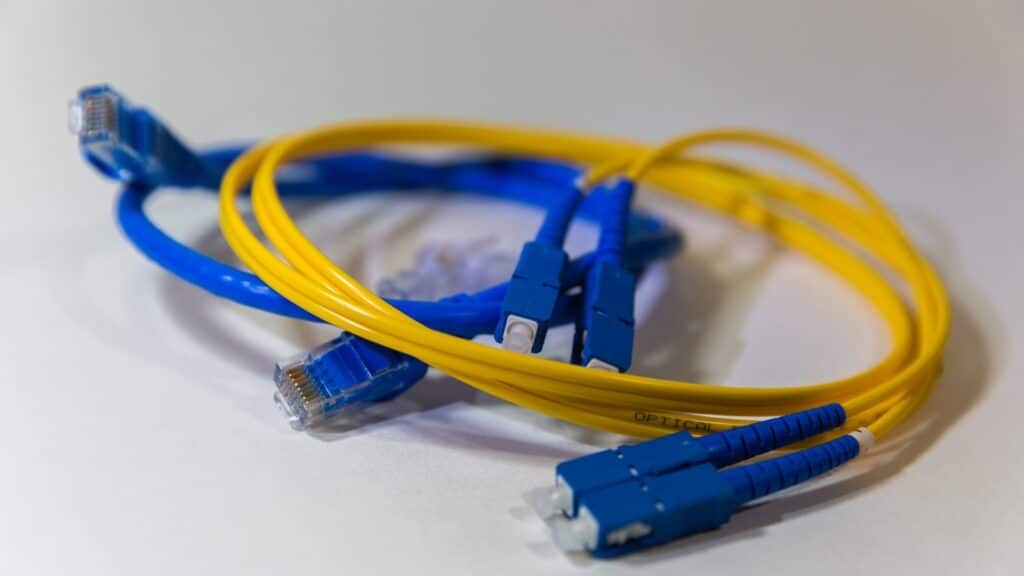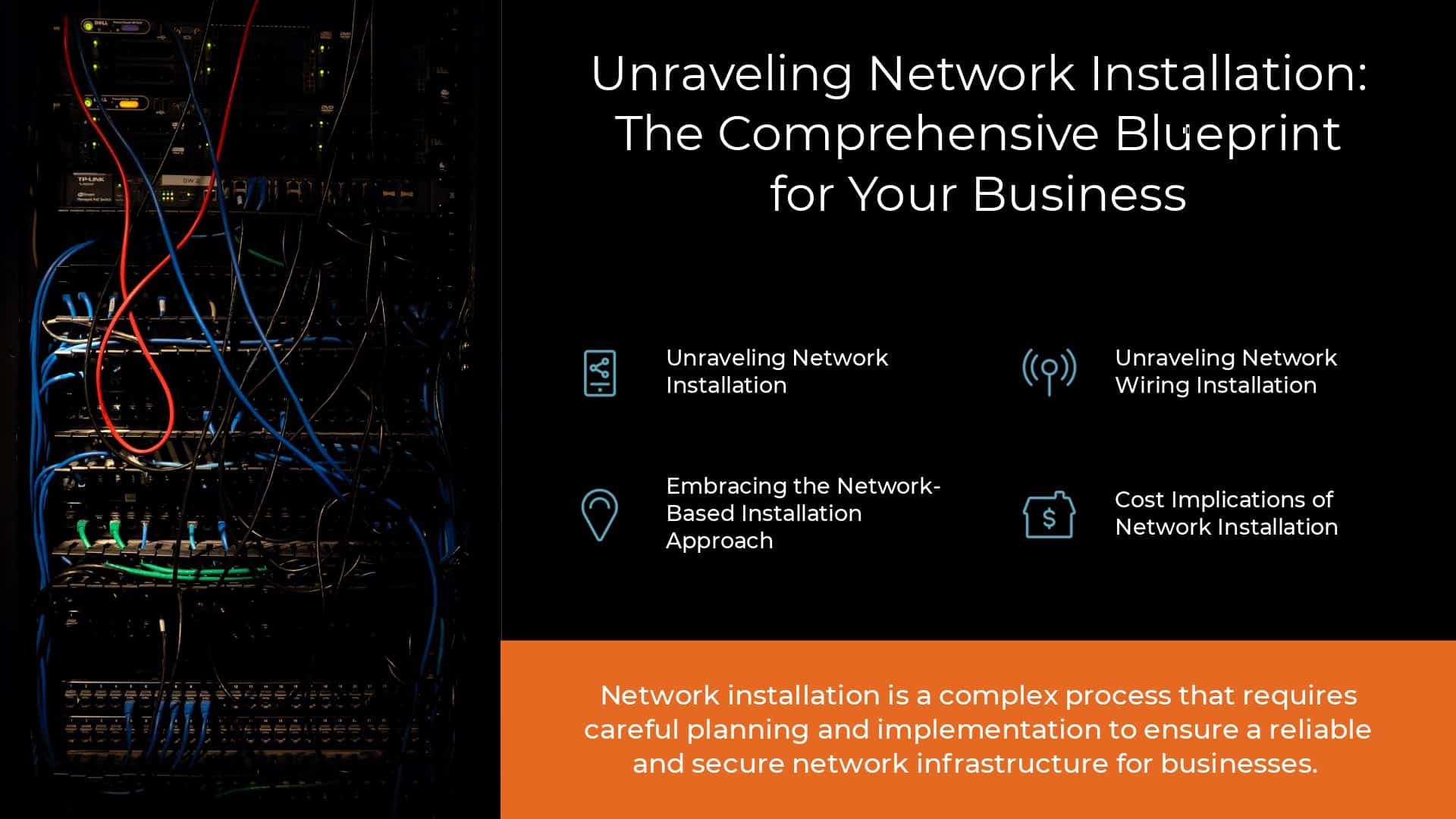Last Updated on May 27, 2023 by Pro Handyman Editorial Team
The complex network infrastructure is at the core of business operations in the digital age. Network installation forms the backbone of your company’s digital activities, providing the basis for sharing, storing, and processing vital data. Wired networks, in particular, offer unmatched stability, reliability, and security that modern businesses can’t do without.
Let’s journey to uncover the intricacies, cost factors, requirements, and vital equipment involved in network installation.
Unraveling Network Installation
Network installation involves strategically selecting and arranging hardware components to establish a network infrastructure that can accommodate your business’s specific requirements.
This usually involves setting up high-performance servers, intricate cabling, and advanced equipment racks in a dedicated room in large enterprises. This high-caliber network facilitates centralized data storage, voice, data programs, and occasionally integrated security and surveillance systems.
In contrast, smaller businesses may utilize a simpler network with a web router configured to work with a specified set of computers and other devices. The cardinal rule is that the installed hardware must interconnect two or more computing devices to create a functional network.
Embracing the Network-Based Installation Approach
Network-based installation leverages the power of Ethernet to provide a sturdy and reliable network that aligns with your business needs. It involves a systematic process of designing, planning, and implementing hardware and software configurations that result in a cohesive network that’s simple to maintain.

Unraveling Network Wiring Installation
The process of network wiring installation often involves a high level of technical expertise due to the specialized nature of the wiring and the necessity for proper structure and organization. Improper wiring can lead to network inefficiencies and maintenance headaches down the line.
To assist in this intricate task, here are a few fundamental guidelines for network cabling installation:
- Avoid routing cables through pipes or holes to allow for future cable additions.
- Do not insert extra twists in the cable.
- Do not position copper cables above or alongside fiber cables, as the weight of the copper can damage the fiber cables.
- Never let cables loose on the floor; utilize overhead, vertical, and horizontal cable managers on your equipment instead.
- Label all cables at both ends and remove any dysfunctional ones immediately.
- Design cabling with good vertical and horizontal runs to avoid downtime.
- Use cable spools within the equipment cases to prevent bending and fraying of cables.
- Use soft, flexible Velcro ties instead of zip ties to manage cables together every two feet.
- Document all cabling components and their distribution and keep this log regularly updated.
- Use cable guides to prevent excessive bending at the point where the cables plug into the equipment.
Cost Implications of Network Installation
The cost of network installation varies significantly based on factors such as project size, location, hardware requirements, and labor hours involved. To illustrate, wiring a small office building could range between $500-$1000 while wiring a large office building, complete with specialized equipment and individual data ports, could cost anywhere from $2000-6000.
The type of cabling used also contributes to the cost:
- Cat 5e cable: This is the least expensive, slowest, and least reliable option. The industry is currently phasing it out.
- Cat 6 cable: A popular choice for small-scale projects due to its affordability and fast data speeds of up to 10 GB, provided the cable run is under 90 meters.
- Cat 7 cable is a more expensive but better-performing option than Cat 5e and Cat 6. Cat 7 cable runs can be much longer than Cat
In-depth Guide to Network Installation
Network installation is far from a simple procedure. It is, in fact, a multifaceted process that ensures seamless communication between digital devices within a business. The resultant system is far-reaching and provides a secure environment for data transmission.

A Pragmatic Definition of Network Installation
Network installation is the process of choosing and positioning the hardware and equipment which will form the physical and connecting components of the network. The intricacy and size of this installation depend on the specific business needs. For example, a large corporation might require a separate room housing high-capacity servers and complex cabling racks, enabling efficient data storage, voice and data programs, and even integrated building security and surveillance systems.
On the other hand, for a small business, a properly configured web router working in conjunction with a specific set of digital devices could suffice. Regardless of the scale, the ultimate objective of network installation is to connect two or more computing devices to form a network.
How Does Network-Based Installation Work?
Network-based installation encapsulates designing, planning, and installing hardware and software, culminating in a comprehensive, well-configured computer network. This network predominantly relies on Ethernet over Wi-Fi to connect to the internet. The network is designed to cater to the business’s needs, provide a reliable connection, and simplify maintenance procedures.
The Art and Science of Network Wiring Installation
Network wiring installation may appear daunting, even to seasoned technology enthusiasts, due to its specialized and meticulous nature. However, specific guidelines are needed to ensure a functional and maintainable network infrastructure.
Cautionary Points While Installing Network Cabling:
- Avoid routing cables through pipes or holes, as this can inhibit future cable additions.
- Do not introduce extra twists in the cable.
- Never position copper cables above or within the same runs as fiber cables due to their weight.
- Ensure lines are clear of access to other equipment.
- Never leave lines loose on the floor; use the provided cable managers.

Adhering to Best Practices in Network Cabling:
- Label all cables at both their origin and termination points.
- Test every line during the installation process and promptly remove any faulty ones.
- Utilize bend-loss-resistant lines in situations where bending is unavoidable.
- Design cabling to have sufficient vertical and horizontal runs to avoid downtime.
- Carefully measure each patch cable for an exact fit.
- Use cable guides to prevent excessive bending at the point where the cables plug into the equipment.
Analyzing the Cost Factors in Network Installation
Several factors, including the project size, site location, hardware requirements, and labor hours, influence the cost of network installation. For example, network installation for a small office building may range from $500-$1000, whereas wiring a large office building with specialized equipment requiring individual data ports may cost anywhere between $2000-6000.
Different types of network cabling have distinct capacities and associated costs:
Types of Network Cabling:
- Cat 5e cable: An affordable option but slower and less reliable than its counterparts.
- Cat 6 cable: An excellent choice for small-scale projects due to its affordability and impressive data speeds.
- Cat 7 cable: This cable is pricier than Cat 5e and Cat 6 but offers superior performance.
- Fiber optic cable: The fastest and most
Reliable, but also the most expensive of the four options. It is best for businesses that need high-speed, long-distance data transmission.

The Role of a Network Installation Service Provider
A network installation service provider is integral in setting up a network system. These professionals have the knowledge and experience to design and install a robust network infrastructure. Services include:
- Conducting site surveys.
- Providing layout diagrams.
- Identifying hardware and software requirements.
- Installing the necessary network components.
- Testing for functionality.
- Providing after-installation support.
Why Consider a Professional Network Installation Service?
- Expertise and Experience: They have the skills and know-how to ensure a successful installation.
- Efficient Resource Utilization: A professional can utilize resources effectively, reducing waste and redundancy in the system.
- Future-Proofing: Experts can design a network that can grow and adapt to your business, preserving the value of your initial investment.
- Security: They can help protect your network from threats and data breaches.
- After-Installation Support: This includes system maintenance and troubleshooting, ensuring your network’s longevity and smooth operation.
Conclusion
In the digital age, network installation is imperative for businesses to stay connected, collaborate effectively, and remain competitive. Implementing a well-designed and professionally installed network will provide a reliable infrastructure for data transmission, enhance business operations, and secure a company’s digital resources.
Every decision matters, from data point installation to the position of network devices. This intricate process requires a meticulous approach, adherence to best practices, and, perhaps most importantly, the expertise of a network installation service provider. These professionals possess the requisite skills and knowledge to navigate the complex landscape of network installation, delivering a solution that meets immediate business needs and supports future growth and development.
